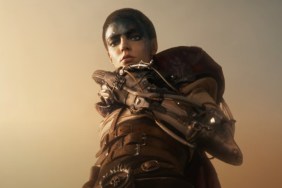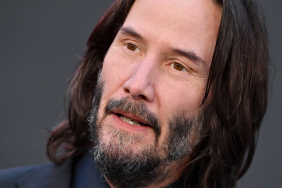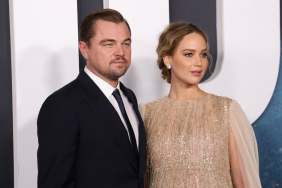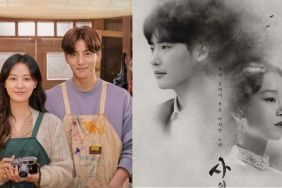By the early ’90s, director John Woo had firmly established himself as one of the top directors in Hong Kong before coming to Hollywood and doing the same with a number of action blockbusters. In the back of his mind, he had wanted to make a movie based on the legendary 208 AD Battle of Red Cliff in which an alliance between two Southern Chinese warlords organized by the warrior Zhou Yu (Tony Leung) and the sly strategist Zhuge Liang (Takeshi Kaneshiro), took on the overwhelming army and navy led by the Emperor’s Prime Minister Cao Cao (Zhang Fengyi). It’s the type of story that has stirred the imagination of Asian boys and men for centuries, and correlations could certainly be drawn with the challenges faced by King Leonidas’ Spartans in Zack Snyder’s 300 only on an even larger scale.
It took Mr. Woo many years to complete the movie, and after becoming an enormous hit throughout Asia, a dramatically shortened version of Red Cliff is finally being released in the States. Americans who erroneously thought Windtalkers was Mr. Woo’s final say in war movies might not be prepared for the amazing action and the stunning set pieces he was able to achieve. What makes the film especially fascinating is how the war strategy and Chinese culture is blended into the story, possibly making it Woo’s best movie in decades.
ComingSoon.net had a rare chance to sit down with one of Asia’s most influential filmmakers a few weeks back.
ComingSoon.net: You’ve been making movies since the ’60s, and the original story on which this movie was based took place in the 4th Century or even earlier, so has this been a dream project that you’ve always wanted to do and finally decided to tackle it?
John Woo: Yeah, I wanted to make this movie for over 20 years, right after “A Better Tomorrow” and “The Killer.” I grew up with this story, and there are so many heroes I admire. Also, they have given me a lot of influence. For example, one character in the movie, he was a great General, and there’s a scene where he’s sitting with a little baby in the middle of a battle, and that was from history, and that was a character that I admired for a long time, and I have used it for Chow Yun-Fat in “Hard Boiled.” He was quite a legend. It’s been so many years that we didn’t have the budget or the technology, so that’s why it took so long to make it. Now we have the money and the technology so I can make it. At the time, we just couldn’t afford it, but all my life, I wanted to make a movie like “Lawrence of Arabia” or “Le Samurai.” It’s just like a dream come true.
CS: You also did the war movie “Windtalkers,” so was that the precursor for doing this? You wanted to make a war movie and you did that as a warm-up?
Woo: Yeah, it’s a different thing. For this war movie, “Red Cliff,” it’s not only about war, it’s also I wanted to show the other sides of our culture, like the tea ceremony and music and football and the war tactics and strategy. There are so many stories in it, so I just wanted to show another side of our culture besides the kung fu movies.
CS: There’s been a wave of Chinese filmmakers from your generation who over the last ten years, suddenly realized they wanted to make these big historical epics, so did that just catch up to your own interests?
Woo: Yeah, yeah, yeah.
CS: How did it come about that all these filmmakers are trying to make these movies now?
Woo: Yeah, making big movies is still pretty cheap in China, and the thing is that we’ve got so much support from the government, like we can have hundreds of soldiers working on the set, playing all the fighters. It’s just so incredible, and Beijing and Shanghai became a very nice place to work. They have great facilities and a huge soundstage the size of Universal Studios, they’ve got a big soundstage. It was so convenient and another thing, to make a historical film in China is so easy. We could have great locations and great talented people to work with. There’s so much manpower working on the movies.

CS: It’s pretty amazing because this movie probably would have cost $200 million or more if you tried to make it anywhere besides China. Just for context, is this story something that’s taught or you read it in school?
Woo: We learn it in school and we’ve learned from this part of history all our lifetimefrom the book, from the comic book, from the movies. It’s extremely popular in China, Japan and Korea. Most Asians, they know this part of history and we grew up with that. Some of the heroes even became like Gods, people worship them and learn from them. Zhuge Liang, the one played by Takahashi, and the General I mentioned, Chao Yung, another guy with the long beard, they call Guan Yu. They all became legends and they were very influential for so many people. Even some of the businessmen nowadays learn so much strategy from the character Zhuge Liang. They use it as a strategy for doing business and they use it to learn how to overcome your enemy and how to win the game, win the war, whatever, they all learn from it. It’s an extremely well-known and popular in Asian society.
CS: Were there other movies already made from this story and if so, what were you hoping to do differently with your movie?
Woo: Yeah, it was made into a television movie so many times and there were so many different versions. I tried to make it a lot different. That’s why I didn’t follow the book that much. I made a lot of changes, and tried to make all the characters more modern. Usually, they’re pretty serious and like a superhero. I wanted to make them more human and tried to make them so that modern audiences could relate to them. I also had increased the female roles in the film, which originally wasn’t in the book. It wasn’t in the book. I think because the story was all about teamwork, I thought that the women should take a major role in the movie, so I wanted to show that the classical women, they had great beauty but they also had a very strong personality, just like women nowadays. They were very independent. Another thing is the war scenes, I also had made in my own way, like the tortoise formations. I invented that. Originally, it was a square shape formation, but it looks pretty dull.
CS: That formation was really amazing to see because I couldn’t figure out how you could pull that off with so many extras.
Woo: I just changed the shape. I looked at a picture of a turtle’s shell and saw the little pattern, so I thought it would be nice to make it into a turtle shell’s shape with a square pattern and different groups using different weapons on the enemy, so I thought it would be interesting.
CS: I wanted to ask more about that. So when you thought, I want to have this army create a formation that looks like the pattern on a turtle’s shell, how does that translate to a thousand extras to be able to do this? I assume that a lot of this was done out in the field.
Woo: We drew a picture first and then we storyboarded the whole scene and then we separated four groups to work on the scene. Everybody understands the idea of the scene, so our stunt team worked with the visual FX supervisor Craig Hayes, they work together very closely, and we separated it into four teams. The first unit, I took with the actors, then the second unit did the soldiers, while the third unit is shooting the horses and the fourth unit is shooting the visual FX.
CS: This is not all at once though.
Woo: No, no, in separate places and separate days, so then we drew a huge circle on the ground and set up the soldiers’ marks and then we planned connecting all the pieces in post. It was quite a big job, and it took me almost two and a half months just working on this one scene.

CS: Also in the final sea battle, you have so much fire going on, and I can’t imagine you could actually do that on the set, because it seems really dangerous. So how do you go about staging something like that? I assume some of it is models.
Woo: No, we built 25 different sized boats, and it was all live action. Of course, we CG-ed the rest of the boats, we CG-ed hundreds of them, but we did a lot of real action on the boat as well. It was long (chuckles) and it was a very dangerous scene to shoot. We had to be very careful about the weather.
CS: These characters are so well known and beloved as heroes, how do you go about casting them? You had a few Japanese and half-Japanese actors, so were there any worries about how people might react to certain people playing the roles or did you just put together the cast and not worry about what people thought?
Woo: I was never worried about using any of the actors for the roles. I knew it would change the people’s mind as they were watching the movie. I had no worry in the beginning, since I didn’t follow the book that much. I just picked actors who I felt (would work), like Tony Leung…
CS: Well, he’s an easy choice because he’s a great actor and you’d worked with him before.
Woo: Yeah, he’s a genius and actually he was playing himself. Tony is a man with a good heart and he always cares about others. He loves friends and he’s very artistic. He never loses his tempers, and he’s very calm and he’s very charming, he’s a very nice guy…
CS: I agree. I’ve met him and all those things certainly apply.
Woo: He’s a man who takes responsibility, and I thought he was perfect for the role, so I think the traditional image of him is that he’s a little mean and selfish person… but I just wanted to change that. The other guy Takashi…
CS: He’s amazing. Everyone who has seen this movie loves Takashi.
Woo: Oh, yeah, and some people even feel surprised at how good looking he is. He’s just a young man with an energy and a good sense of humor, and he also looks really elegant. That’s how I cast them. I think that they all bring the characters a new life.
CS: While you were working in the United States, did you stay connected with what was happening in Asia and Hong Kong in terms of the actors there?
Woo: When I was working in Hollywood, I didn’t have much chance to watch Hong Kong films or Chinese films, just a few, and I found the movies from China were getting better and better. I was so amazed that they had made so many great movies. For Hong Kong films, I’ve been told that the market is getting smaller and smaller and the business wasn’t that great. That’s one of the reasons I wanted to go back to China to make a film, because I wanted to try to help and reopen the market.
CS: The movie’s done very well.
Woo: Oh, it did very well in China and it was also a success in Japan as well. Also it did well in Korea.
CS: I think a lot of people assumed that you turned your back on Hollywood when you decided to return to China to make this. I assume that’s not the case.
Woo: No, no, no…

CS: But over the years, you’ve had a ton of movies with your name attached. If you go to IMDb now, you have 20 movies listed there, so are these movies you’re still developing? This film you must have finished a year ago or so?
Woo: A year ago, yes, yes…
CS: So what have you been doing this past year? Have you been developing some of these other projects?
Woo: Yeah, I’m developing two projects in Hollywood. One is a remake of Melville’s “Le Samourai” then also I’m working to make “The Killer” as a producer. I think it’s going to be directed by a Korean director, John Lee. He has made a very successful dramatic movie called “A Moment to Remember.” He’s studied film in New York and he’s a wonderful young director. It’ll be an American movie, all in English, and I also want to do a Marco Polo movie.
CS: There was a Marco Polo movie being developed for a while written by William Monaghan. Would you want to direct that one?
Woo: No, this is a different one. We have new writers working on it. My next project is going to be a co-production between a Chinese and a Hollywood studio called “Flying Tigers,” that is mostly my next project.
CS: I wanted to ask about the remake thing, because the Melville movie is one of your favorites and “The Killer” is from one of your own movies. Most directors when they hear someone wants to remake their movie, they want nothing to do with it whatsoever. And few of them might ever consider directing a remake of a movie they love. Let’s talk about why you’d want to be involved with those two remakes.
Woo: For “The Killer,” I’m not going to direct because the Korean director loves it so much, he just wants to direct it, and then for “Le Samourai” because I’ve been in love with that movie for so many years. I think it would be nice to make an updated version, and add a little bit of my style. So that’s the only one I really want to remake, and I think it can in with my own character.
CS: Is “Flying Tigers” going to be shot in China as well?
Woo: Yeah, and in China and the United States. It’s based on a true story in WWII, about a group of American volunteer fighter pilots who worked with the Chinese Air Force fighting with the Japanese and they won the war. Also, it’s the story of General Clair Chennault – have you heard about him? They did a great contribution for the Chinese, and the Chinese people love and respect them. The whole story is about a friendship between the Chinese and an American and they worked together. It’s a World War II Air Force movie.
CS: Are you going to shoot that next year?
Woo: Hopefully, but it will be another big budget movie, but most of it’s going to be shoot in China.
John Woo’s Red Cliff opens in New York on Wednesday, November 18, and in other cities on Wednesday, November 25.









